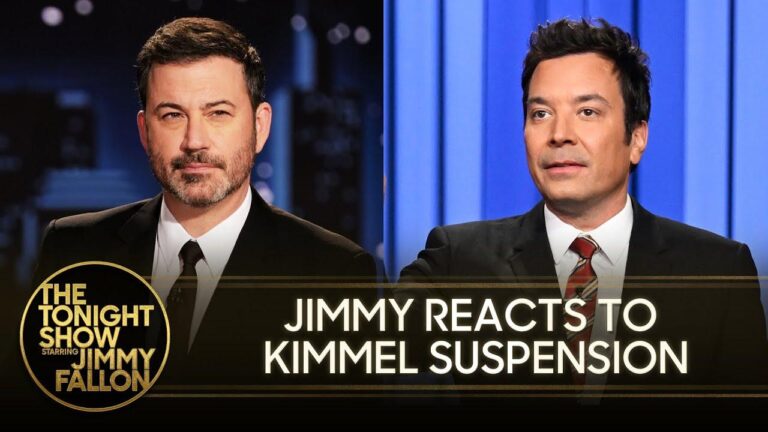Trump’s Growing Influence and the Transformation of American Media
The recent decision to suspend comedian and late-night host Jimmy Kimmel’s program highlights a pivotal moment in the ongoing evolution of the U.S. media environment, heavily influenced by former President Donald Trump’s expanding reach. This incident exemplifies a broader pattern where media organizations and personalities increasingly adjust their content and editorial choices in response to political pressures linked to Trump’s presence. As the lines between objective journalism and partisan commentary continue to blur, Kimmel’s suspension serves as a clear example of how Trump’s influence is reshaping media narratives and operational strategies in often divisive ways.
Experts in media studies point to several significant outcomes from this trend:
- Increased corporate prudence: Broadcasters are more cautious about airing content critical of Trump or his allies, wary of potential financial backlash.
- Polarization of audience segments: Viewers gravitate toward ideologically aligned outlets, which deepens societal divisions and limits exposure to diverse viewpoints.
- Calls for clearer media governance: The situation spotlights the urgent need for transparent policies addressing political interference in private media operations.
| Dimension | Effect |
|---|---|
| Editorial Independence | Weakened by political and economic pressures |
| Public Confidence | Declining amid perceptions of bias and censorship |
| Content Variety | Diminished as dissenting opinions are sidelined |
The Impact of Political Pressure on Media Autonomy and Trust
Jimmy Kimmel’s suspension is emblematic of a growing challenge faced by American journalism: the increasing encroachment of political influence on editorial freedom. Media outlets now operate in an environment where expressing critical views about powerful political figures can provoke significant backlash, threatening both careers and corporate stability. This climate fosters self-censorship and editorial caution, undermining the foundational principles of independent reporting.
The mechanisms through which political forces exert influence are multifaceted, including:
- Targeted advertising boycotts driven by partisan groups
- Direct lobbying of media owners by political allies
- Legislative initiatives aimed at curbing press freedoms
- Public smear campaigns against journalists critical of government policies
| Pressure Type | Effect on Media | Illustrative Example |
|---|---|---|
| Political Interference | Limits editorial autonomy | Suspension of Jimmy Kimmel |
| Economic Coercion | Reduction in advertising revenue | Organized boycott campaigns |
| Regulatory Constraints | Threats to broadcasting licenses | Government licensing pressures |
How Media Outlets Can Adapt to a Highly Partisan Political Climate
To maintain credibility and journalistic standards amid intensifying political polarization, media organizations must implement comprehensive strategies. Prioritizing transparent editorial policies and rigorous fact-checking can help rebuild trust with audiences skeptical of media bias. Cultivating diverse newsroom teams that represent a broad spectrum of political and cultural perspectives enriches reporting and counters accusations of one-sidedness. Additionally, employing advanced analytics to monitor audience reactions enables outlets to address misinformation and polarization proactively without compromising editorial integrity.
Collaborative efforts between media companies and independent fact-checking organizations also play a crucial role in combating misinformation and partisan narratives. By pooling resources and expertise, these partnerships enhance the media’s ability to provide accurate, balanced information. The table below outlines key strategies and their anticipated benefits:
| Approach | Execution | Expected Outcome |
|---|---|---|
| Editorial Transparency | Publicly share editorial guidelines and corrections | Builds audience confidence and credibility |
| Diverse Newsrooms | Hire journalists from varied backgrounds and viewpoints | Mitigates perceived bias and broadens coverage |
| Data-Driven Audience Insights | Utilize analytics to gauge and respond to viewer feedback | Enhances content relevance and reduces polarization |
| Cross-Platform Partnerships | Collaborate with fact-checkers and rival outlets | Strengthens defenses against misinformation |
Recommendations for Bolstering Editorial Integrity Amid Political Divisions
In order to protect the core values of journalism during times of intense political fragmentation, media organizations should adopt a layered approach emphasizing transparency, accountability, and editorial independence. Clear communication of editorial principles and decision-making processes to the public is vital. Conducting regular independent audits of content can help identify and correct unconscious biases, fostering greater trust across diverse audience groups. Furthermore, building newsrooms that reflect a wide range of political, cultural, and socioeconomic backgrounds can help break echo chambers and expand the scope of narratives presented.
Practical steps to implement these goals include:
- Creation of impartial editorial review committees to oversee sensitive or controversial stories.
- Establishment of ongoing partnerships with third-party fact-checkers to ensure accuracy.
- Comprehensive ethics training programs designed to equip journalists for reporting in polarized environments.
- Transparent and prompt correction policies that openly acknowledge and rectify errors.
| Initiative | Purpose | Benefit |
|---|---|---|
| Editorial Review Boards | Guarantee impartial content | Strengthens public trust |
| Fact-Checking Collaborations | Ensure factual accuracy | Reduces spread of false information |
| Ethics Education | Prepare journalists for polarized reporting | Improves editorial judgment |
| Open Correction Policies | Maintain transparency with audiences | Demonstrates accountability and builds loyalty |
Conclusion: Navigating Media Challenges in a Politically Charged Era
The suspension of Jimmy Kimmel’s show is a stark reflection of the shifting power dynamics within the American media sphere, highlighting former President Donald Trump’s growing capacity to influence public narratives and media operations. This event raises critical questions about the future of editorial independence, the boundaries of political commentary, and the role of media in a deeply divided society. As media outlets continue to adapt to these pressures, the broader implications for journalism and democratic discourse remain a focal point for observers and stakeholders alike.







